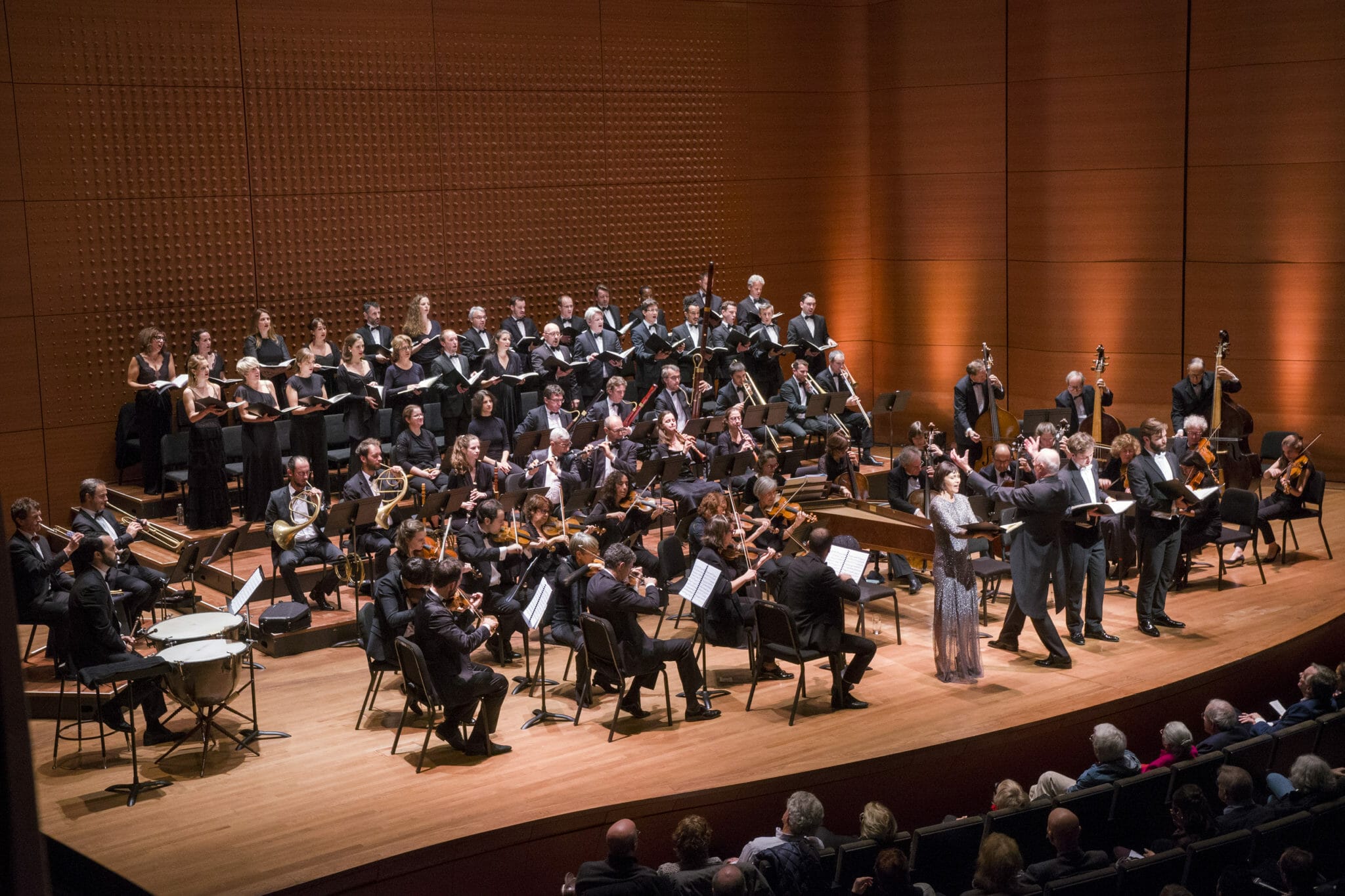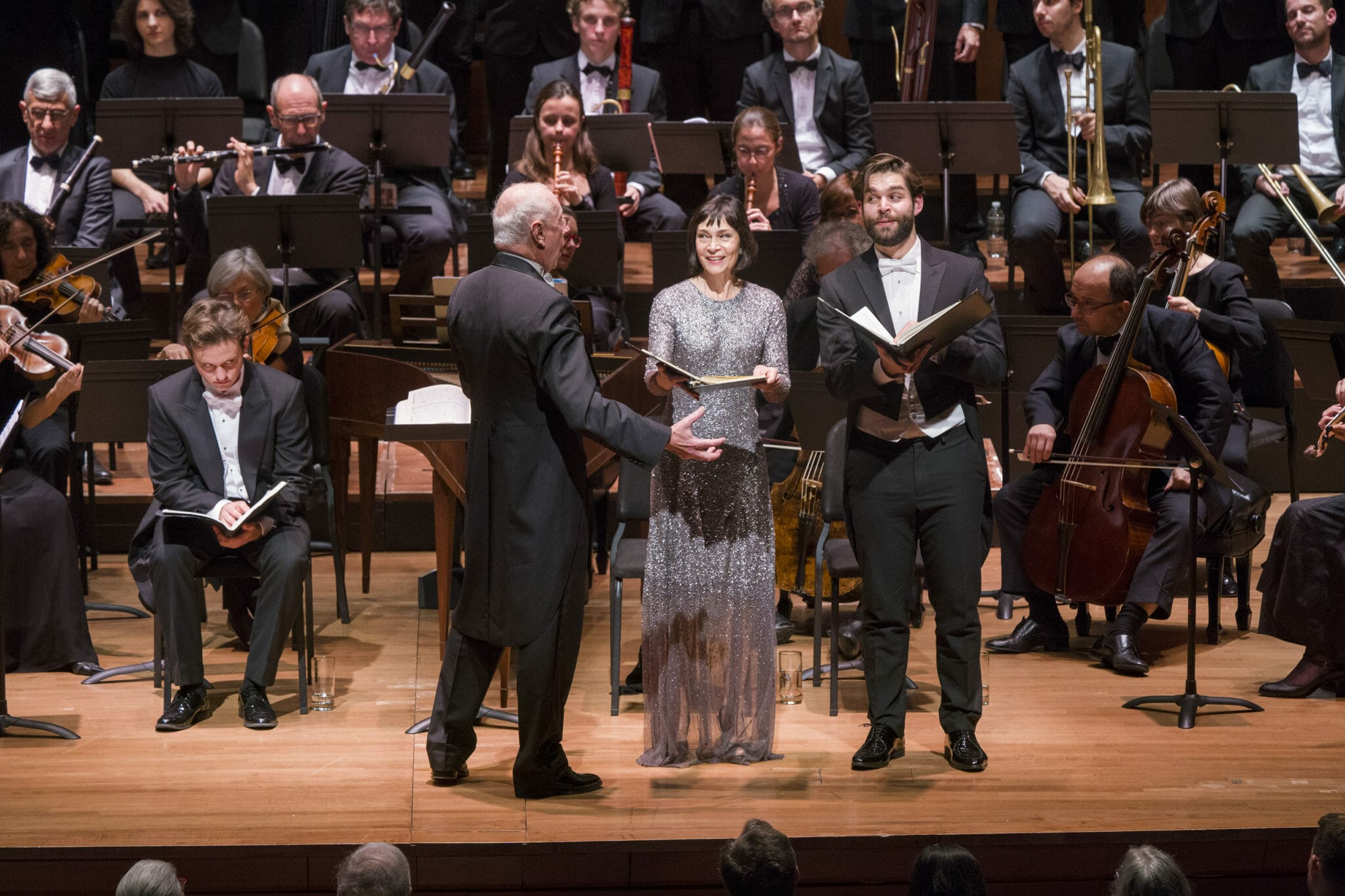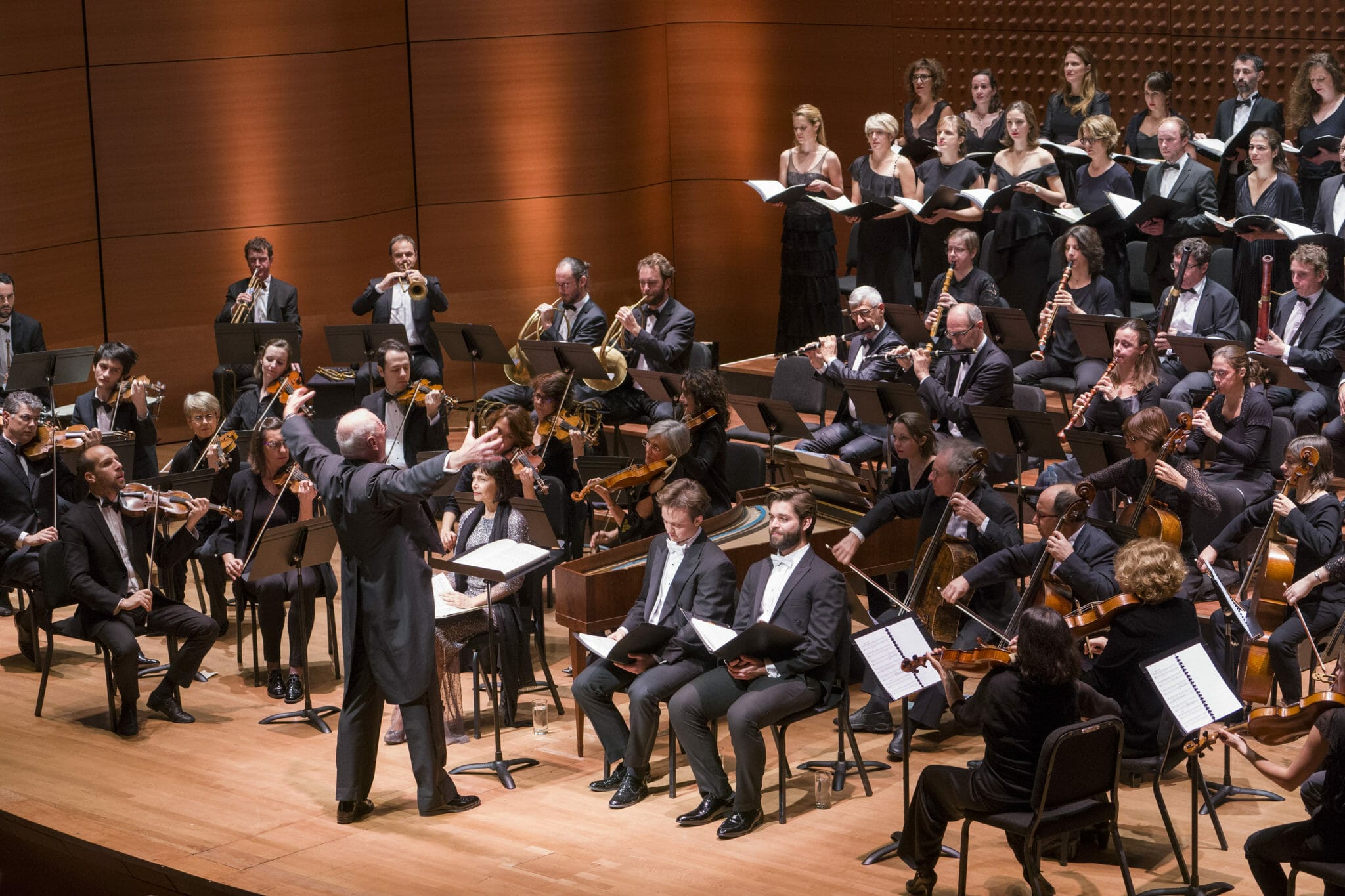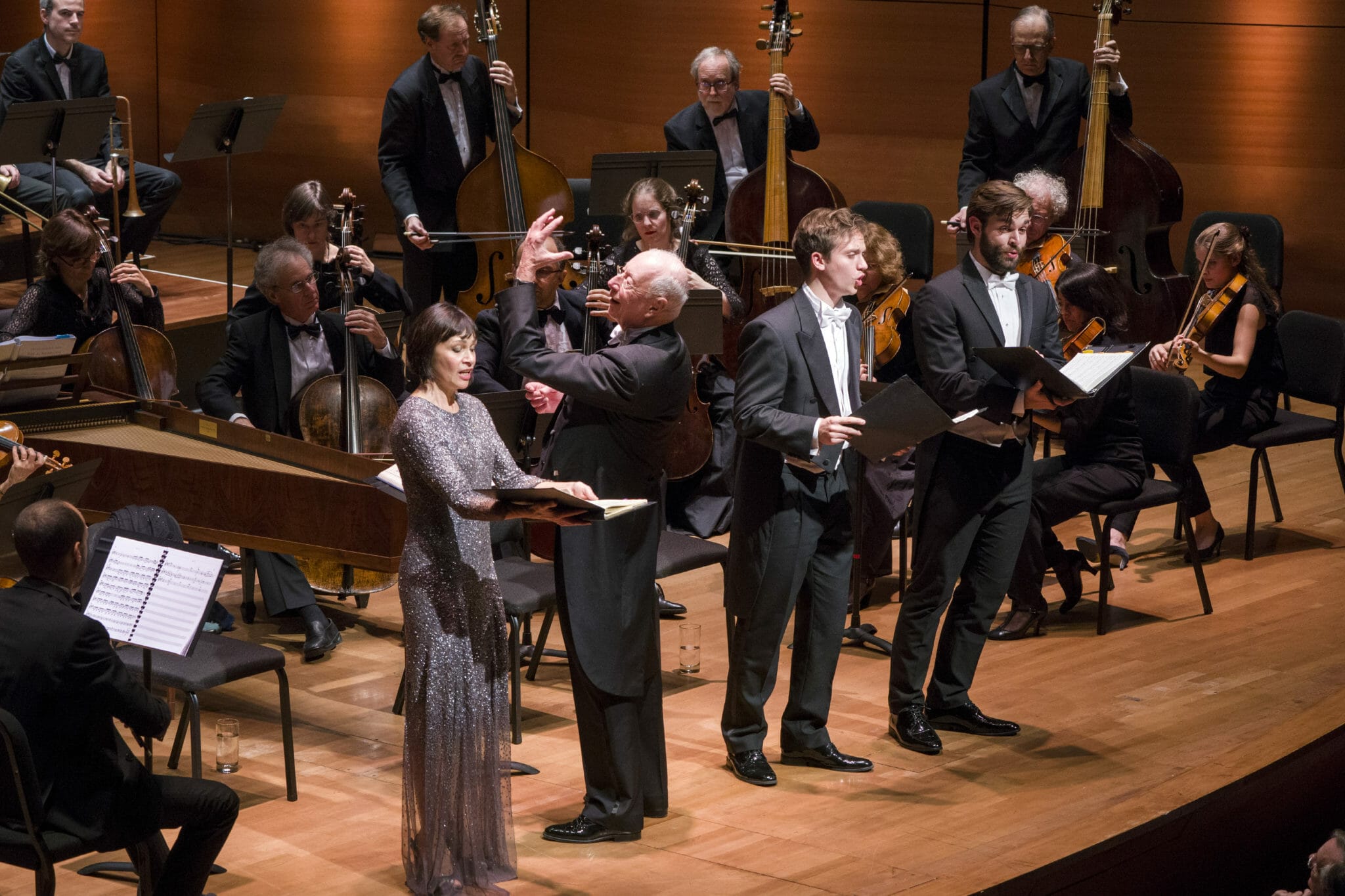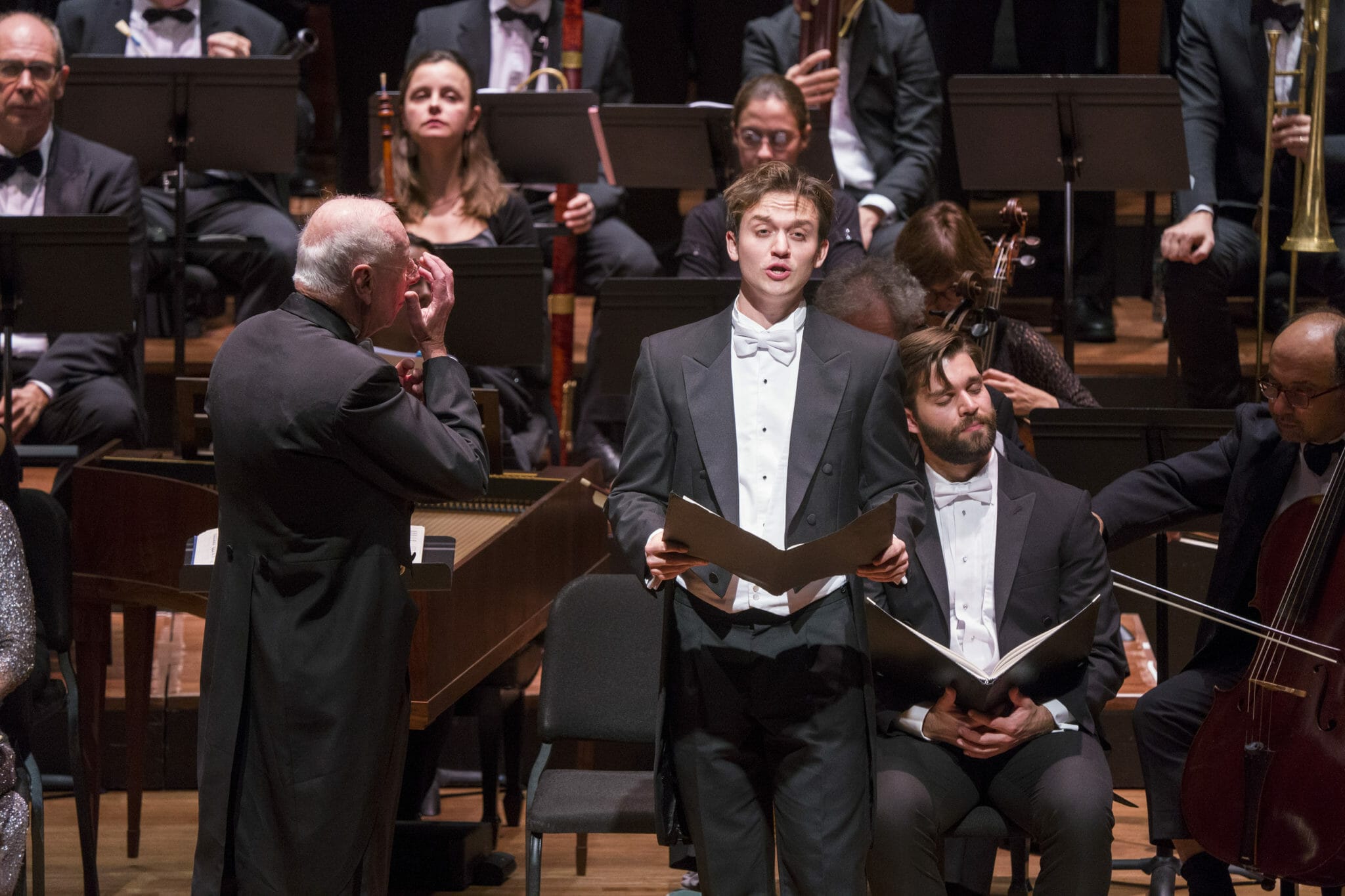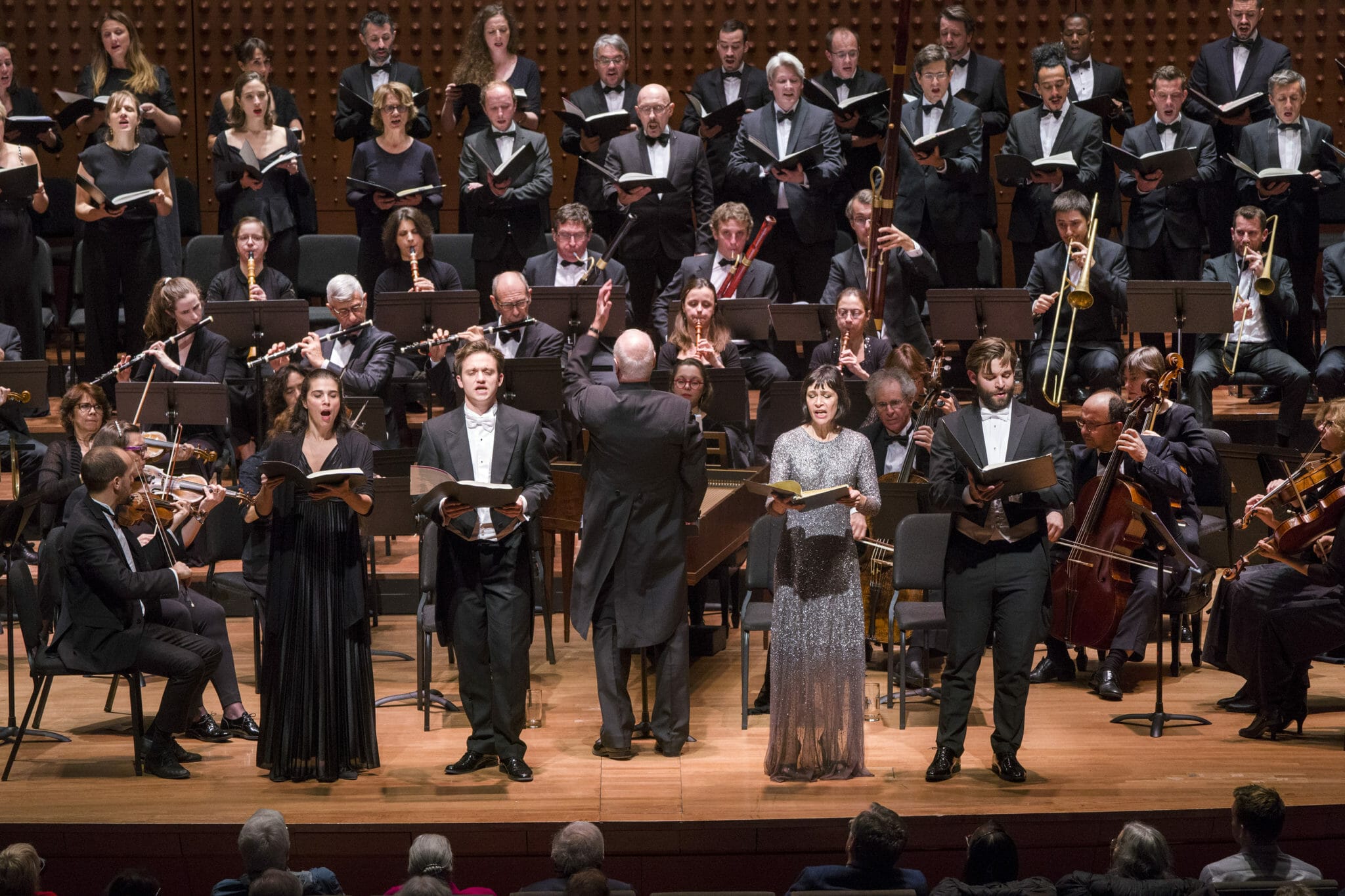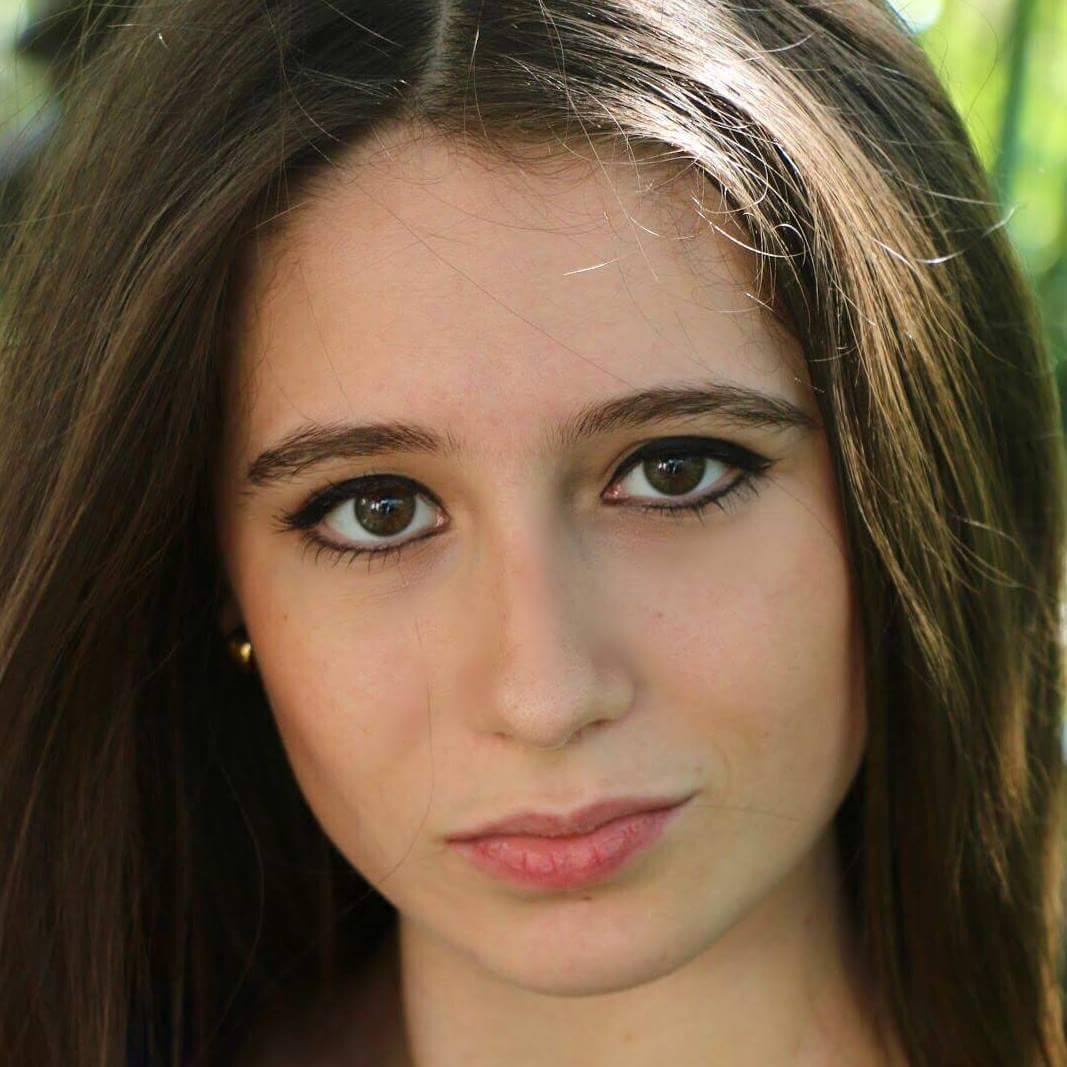An impressive sight awaits us at the Lincoln Center. Baroque strings, flutes, oboes, clarinets, bassoons, contrabassoons, horns, bass trombones, and timpani flank the stage of Alice Tully Hall. The musicians of Les Arts Florissants are gathered in the service of the ineffable, which Haydn reveals to us in his masterpiece Die Schöpfung.
Haydn’s Evocation of Creation at the Lincoln Center
Early in the piece, we are transported to the chaos that preludes the Creation: one dissonance leads to another in probing harmonies that evoke a primordial ether. Life stirs for the first time in a bassoon arpeggio, and the first rays of light accompanying amorphous pizzicato pluckings blossom into an emphatic C-major chord emanating from the whole ensemble. Twenty-seven singers -- the sons and daughters of God -- valiantly assert the wonderment of God’s creation of light, of heaven and earth, of sun and moon, of land and water, and of plants. Their sound, which is homogeneous yet remarkably complex, bursts forth in a hall as resonant as seawater. In the contrapuntal “Die Himmel erzählen die Ehre Gotte”, experience viscerally the waves of fugal textures which become increasingly chromatic. The eight sopranos and six tenors vie for prominence in a long fugato passage, which is sustained through to the end of the number in a sublime apotheosis.
It is as if Haydn is testing our limits to understand the unfathomable mystery of creation through his harmonic language. The resolution in this selection seems to provide a sudden divine clarity and inspires a sense of overwhelming awe.
Our Human Duty to Acclaim God’s Work
Later, we learn that this is the proper reaction. The libretto in German, which is derived from Genesis, Psalms, and John Milton’s Paradise Lost, depicts the creation through the perspective of the archangels Raphael, Uriel, and Gabriel. These spiritual beings are embodied by a bass, tenor, and soprano soloist respectively. However, in the third section of the work, the bass and soprano represent Adam and Eve. Projected subtitles announce the arrival of two “noble” creatures, who “with native Honor clad,/In naked Majesty seem’d Lords of all”. The eloquent textual derivation from Milton poetically identifies them as the highest forms of being. In this way, the libretto reflects a shift from the older philosophical tradition of recognizing the sinful nature of the flesh in Bach's oratorios, for instance, to an Enlightenment appreciation of the inherent value of human beings as rational agents.
While Haydn's work belie humanistic themes, the composer also imbues the creation of man with a musical mnemonic on human insignance when compared to the grandeur of the Creator. He contrasts the breath of a life-giving God, which is illustrated with an advanced use of harmonic idiom, with a portrayal of human love which is rendered in a pastoral, simple folk rhetoric. The theological implications are clear: it is our human duty to praise the Creator in recognition of the special gifts granted to us by a benevolent Father. Thus Adam and Eve, having discovered the "marvels" of paradise, merge with the Heavenly Host to praise the Lord in a magnanimous hymn that acknowledges the very act which “called forth this wondrous frame”. We delight in the whispered pianos. Soft as they are, they seem physically palpable, reminding us of the mystery of the human condition: that while we are caught in the corporeal world of sounds and frequencies, we straddle an exalted intellectual and spiritual sphere.
William Christie is so thoroughly implicated when he conducts that he raises on tiptoe to coax an elongated crescendo from the strings and almost stamps in his long tails -- such is his vigor while directing the choir in syncopated rhythms. His intensity and meticulousness make for an awkward moment when he halts the soprano soloist to lecture the audience after a cellphone boisterously cuts into a hushed recitative.
Christie mumbles about Haydn not having to contend with such interruptions before the performance resumes with the words “God spoke”, which no doubt strikes an appropriate degree of guilt into the hearts of the few audience members who dare cough in between numbers.
However, despite his crotchetiness, this reviewer believes that William Christie does allow for the divine element to speak. Under his direction, the choral textures are crisply focused and the orchestral choirs are cleanly delineated, despite a few bumbles from the horns in the opening movements. His slow pacing is carried out with the right conviction and he brings out a large array of musical shades. It is not difficult for us to follow the libretto’s injunctions to kneel humbly before the wonder of creation at so sensual an intimation of another world beyond our own.
Expressive Performers: Haydn’s Sublimity and Humor
Christie is remarkably attentive to the singers’ choices of nuances and he often stands mere inches away from them to observe the minute expressions on their face. During the charming evocation of a nightingale delivered with grace and ease by soprano soloist Sandrine Piau, a delightful moment occurred between them as they looked at each other and tapered off to a vaporous diminuendo, seemingly on the spur of the moment. In this writer’s opinion, Piau is effervescent, and the phrase she sings early on to describe the firmament which “delights the ravished senses” might just as well be attributed to her. She is elegant in a black bob and a gauzy dress and skirt of shimmering grey, like the raiment of the stars. Her generous expressive gifts are tempered by a certain sophistication that renders Eve’s blissful acceptance of Adam’s leadership, for example, with the appropriate womanly charm. According to this reviewer, her voice possesses a Mozartian quality of voice that warms to the sweetest of tones. When she sings of greenery springing to fertility, we associate the ardency of her tone with the earth’s nubile vitality.
Hugo Hymas is our tenor, and he bids the harp and lyre to awake and rejoice in the heavens and the earth, which “the almighty God” has “clothed (..) in stately dress!” He sings with a spry and handsome quality of voice and generates moments of rare beauty, such as floating high notes accompanying the sinuous and vapory music that evokes the moon.
This reviewer would have appreciated more understanding of this musical phenomenon from the tenor. Despite his sensitivity in more poetic passages, perhaps we might have appreciated more effusiveness from someone observing the act of creation.
Hymas’ embodiment of Raphael introduces us to Haydn’s tone painting. The composer has not only captured the essence of each aspect of nature as it is created, such as the strong gales, lightning, rain showers, and snowy hail of the heavens, but he also precedes each one with an orchestral painting of the idea.
Before the tenor utters a phrase, we engage in musical charades with the composer: we try to intuit from the orchestral textures what facet of the creation will be portrayed in the vocal line. This reviewer would have appreciated more understanding of this musical phenomenon from the tenor and more effusiveness from someone observing the act of creation.
Mozart wrote that ‘Haydn alone has the secret both of making me smile and of touching my innermost soul’, according to the program notes. Bass Alex Rosen sings with burnished tone throughout, and his treatment of “Gleich öffnet sich der Erde Schoß”, which describes the creation of the animals, demonstrates an intimate understanding of Haydn's musical humor.
Rosen stands with a bemused expression as the composer's playful mimicries of animal sounds or movements in the orchestra precedes his vocal phrases. When Rosen sings, his interpretive selections reflect, for this writer, just the right color, mood, and weight for their animal subject, whether he emphasizes the roar of the lion, adopts the nimbleness of the stag or the sprightliness of a horse in his melismas, or elongates s and z consonants in imitation of buzzing insects. His exaggerated diction as he names the subterranean creation of the creeping worm -- topped off by his choice to take the final note down a grave-sounding octave -- makes the audience chuckle. In moments this writer seems to hear intonation issues when the orchestra leaves him exposed, yet this young artist is one to watch.
The evening ended with a standing ovation.
We read in the program notes that Haydn prayed every evening to bring the work to fruition; he was intimidated by the prospect of writing a grand oratorio in the vein of Handel's oeuvre. Some may point out that this piece does not possess the spiritual exaltation of Palestrina or the solemn meditations of Bach, but Haydn's simple faith is palpable in every measure of his vivid writing. For those whose imaginations crave the kind of sincere religious expression, inventiveness, and flights of fancy Haydn provides, this evening of inspired music-making proved deeply moving.
HIGHLY RECOMMENDED
When:
Lincoln Center's Great Performers Concerts Series lasts through May 19, 2019.
Where:
Alice Tully Hall
1941 Broadway
New York City, NY
Tickets: For information and tickets visit the Great Performers Festival website or call 212.721.6500.
Visit Les Arts Florissants website to view their schedule of upcoming performances.

